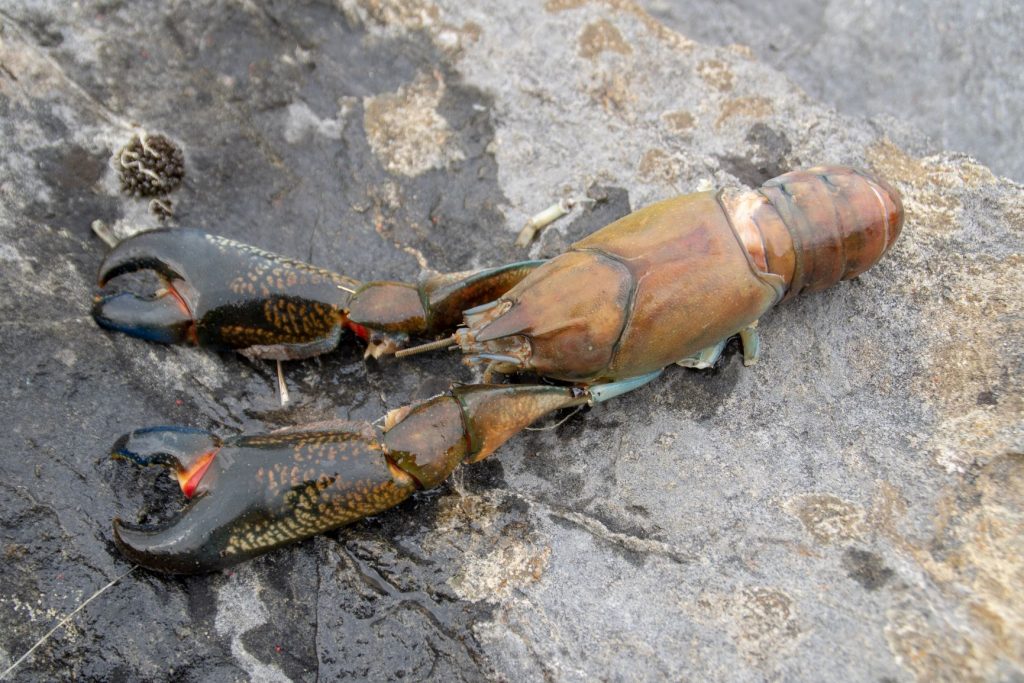Invasive species and diseases threat to native Crayfish

May 20th, 2019
The National Parks and Wildlife Service (NPWS) and the Marine Institute have issued a warning to all water users about the severe and increasing threat to our native Crayfish species.
The warning comes ahead of a seminar on the conservation of the White-clawed Crayfish in Ireland and the management of Crayfish Plague taking place in Galway tomorrow.
Ireland’s population of the globally-endangered species is under threat from both Crayfish Plague and invasive alien species.
Earlier this year, the NPWS identified Crayfish Plague on the River Maigue, upstream of Adare in Co Limerick. This is the seventh river affected by the disease that the NPWS predicts could wipe out the crayfish from the river system.
The NPWS also confirmed today that a population of a non-native crayfish species – Australian Crayfish – has been found for the first time in the wild in Ireland. The service would not disclose the location.
Brian Nelson, an Invertebrate Ecologist with the NPWS said that this discovery “is of concern as this has never been found before in Ireland”.
“We would like to emphasise the growing threat that alien invasive species are having on biodiversity in Ireland and globally and we urge everyone to think carefully and help in its prevention,”
“For the most invasive species, there is now specific legislation in place which bans possession and keeping and gives the NPWS powers to seize specimens and eradicate them from the wild.”

Invasive species are one of the five key drivers of biodiversity loss, according to the Intergovernmental Science-Policy Platform on Biodiversity and Ecosystem Services (IPBES).
In January, Ireland was one of nine EU States to receive a letter of formal notice from the European Commission to improve on its implementation of the EU Regulation on Invasive Alien Species.
Under the Regulations, Member States had to introduce dissuasive penalties and to adopt specific lists of invasive alien species for those territories and inform the Commission accordingly.
The Member States in question, Ireland included, have failed to notify the Commission about their penalties or invasive species lists.
The NPWS has come under recent criticism for its handling of rhododendron in Killarney National Park in CO Kerry, with the invasive species estimated to be present in around one-third of the park’s 10,300 hectares reach.
Last year, Trevor Halpin of Groundwork, a voluntary environmental group set up to tackle invasive species, said that there is a lack of a clear long-term strategy to deal with the issue.
Groundwork first got involved in rhododendron clearing in Killarney in 1981 and continued to apply a science-based approach for 25 years until a dispute with park management over the best way to control the species in 2009.
Mr Halpin told The Green News that legislation to protect the national park is “weak” and that the Government doesn’t have a genuine management plan in place.
[x_author title=”About the Author”]







